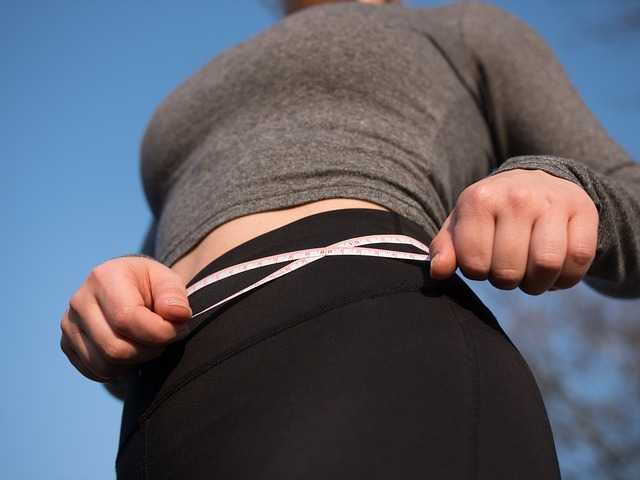Published by Dr MIguel Fernadez Calderón: 01/29/2024
If you want to improve the appearance of your abdomen, you have probably been interested in abdominoplasty. You probably want to know if you can have a tummy tuck if you are overweight.. It repairs the abdominal musculature and eliminates skin flaccidity. Unfortunately, not everyone can undergo this procedure. For an attractive and safe result, your body must meet certain requirements. In this article we explain which patients are good candidates for this surgery.
Why is it important to know your BMI?
As you already know, your weight is not a sufficient measure to know if you are obese or not. The
obesity depends on another factor such as height.
The Body Mass Index (BMI) is a measure that can guide us about excess body fat. It is calculated by dividing your weight (in kilograms) by your height (in meters) squared. It guides us to know if we are at a suitable weight for our specific physique.
A BMI of 30 or higher implies that you are obese, and contraindicates surgery. Values between 25 and 29.9 mean overweight (with these figures, surgery can be considered). The best is that your BMI is between 18.5 and 24.9, these are the best parameters for surgery. And also for your general health.
On the Internet you will find multiple calculators to easily find your BMI. If you are obese and want to have abdominoplasty surgery, you already know that your BMI should be below 30. Start losing weight, and use your BMI as a guide to your progress. It will motivate you and help you evaluate your progress.
Can abdominoplasty be performed when overweight?
You should know that abdominoplasty is not indicated in patients with obesity. An abdomen with a lot of fat will never be associated with a good result.
Firstly, for safety reasons. Obesity is associated with a high risk of complications in the operating room. These complications are both general (thrombosis, infection, respiratory problems) and associated with healing.
Secondly, for aesthetic reasons. Obese people have too much fat, both inside and outside the abdominal wall. Surgery removes the fat outside the abdominal wall, but not the fat inside. To operate on such an abdomen would give the belly a bulging appearance. The result, besides being risky, is aesthetically unacceptable.
In obese patients we cannot achieve the main objectives of abdominoplasty. The musculature cannot be repaired properly, and the abdomen does not achieve a flattened appearance. However, we have to clarify that obesity is not the same as overweight. To distinguish these terms, we use the Body Mass Index. Very high BMI values imply obesity, somewhat lower BMI figures are classified as overweight.
While obese patients should not undergo surgery, abdominoplasty can be considered in overweight patients. Abdominoplasty in overweight patients can be considered if the BMI is not very high. Also if you are in good health, and your surgeon verifies that you do not have too much intra-abdominal fat.
Risks of abdominoplasty in overweight patients
Overweight patients may not only have unexpected results after abdominoplasty, but are also exposed to greater risks.
Common complications and how to prevent them
The complications that a patient who undergoes an abdominoplasty with overweight is subjected to later may be increased risk of infections and bleeding. This is because they have more fatty tissues and blood vessels in the treated area.
They are also more likely to suffer from respiratory problems or venous thrombosis due to inactivity after surgery. Having more adipose tissue can lead to poor healing.
Adequate preparation for abdominoplasty surgery can prevent these complications. Even if the patient is overweight, he/she can begin to eat healthily and do some physical activity prior to surgery. Additionally, it is important to stop smoking.
Special considerations for recovery
Due to being overweight, patients may require a longer recovery time than a patient with a normal BMI. They must also consider the risks we have discussed, such as infection, bleeding or respiratory problems.
In addition, this type of patient may require more frequent postoperative care and follow-up visits to the surgeon to ensure that the recovery process is proceeding as expected.
How do I know if I am a good candidate for abdominoplasty?

Abdominoplasty candidates usually have diastasis recti. This means that the musculature has "given of itself" by pregnancy, overexertion, or excess weight. This does not usually cause pain or discomfort. However, it does create a bulging, lumpy appearance in the belly. Its repair in abdominoplasty allows, in addition to a defined waist, to have more strength in the abdomen.
In case of female patients, it is best to undergo surgery after pregnancy. Becoming pregnant after abdominoplasty is possible, but not recommended, as it may cause recurrence of diastasis recti.
The ideal patient for abdominoplasty has skin flaccidity in the front part of the abdomen. In cases of extreme weight loss, the skin may sag in other areas (back, flanks...). In these situations, abdominoplasty is not enough and other more aggressive surgeries must be performed to eliminate the flaccidity (lower body lift, trunk lift...).
The ideal abdominoplasty patient should not smoke. Smoking increases too much the problems associated with surgery. The wounds close worse and cause more problems. And, what is worse, it increases the possibility of very serious complications such as thrombosis, respiratory problems... It is always a good time to give up smoking, but if you want to undergo surgery, even more so!
The ideal abdominoplasty patient has usually lost a lot of weight in the past. However, at the time of surgery she should have been at a stable weight for several months. And she must be able to maintain this weight for a prolonged period of time.
Also, you need to have reasonable expectations about the surgery. You should know that abdominoplasty removes excess sagging skin, but does not serve as a slimming procedure.
You should also be aware that the results will be spoiled if you do not diet and exercise after surgery. Finally, surgery should be a personal desire, and not the will of family members or partners.
Taking anticoagulant medication, diabetes, previous abdominal surgeries... may
increase the risk of complications. However, this is not a reason not to undergo surgery. You should only discuss it with your surgeon in the previous evaluation.
What is the ideal weight for abdominoplasty?
There is no ideal weight for abdominoplasty. A very tall patient can weigh 80 kg and not be obese. However, a very small patient, weighing 80 kg, is very likely to be overweight. Therefore, your weight is not the best parameter to control whether you can have surgery or not. It depends on other factors, such as height, to know if you have extra kilos.
Another important detail is the distribution of fat in the belly. Generally, excess fat is not good for surgery. But ultimately, the worst thing is that the accumulation of fat is located within the abdominal wall. Your surgeon will assess the distribution of your fat in consultation.
He will also take accurate height and weight measurements to determine if you are a good candidate for surgery.
How to lose weight for a tummy tuck?
On your way to a correct BMI, diet and exercise play a fundamental role. The first step is to identify those foods that are most harmful to your health, and eliminate them completely. Try to eat 3 or 4 meals a day, but in smaller quantities than before, and without unhealthy products.
You should avoid industrial pastries, convenience foods, fried foods, and products with too much sugar. Avoid too much salt in your meals, which will cause you to retain liquids.
Losing weight for abdominoplasty is important, but even more important is that your diet ensures you all the necessary nutrients. For this surgery, you need sufficient reserves of vitamins, trace elements, proteins and iron. Therefore, in addition to losing weight, you need a varied and healthy diet. You must have fruits, vegetables, meat or fish, legumes, whole grains...
Exercise is another pillar if you want to lose weight for a tummy tuck. If you have never been very athletic, start slowly. Start by going for a walk, and then go for a run. The exercise does not need to be intense, but it should be long-lasting, to allow time for fat burning.
Aerobic exercise will make you lose weight. It will also improve your respiratory and cardiovascular systems. Once you reach a weight associated with an appropriate BMI, you need to strive to maintain it. Diet and exercise are still essential.
How many kilos are lost after abdominoplasty?
Losing weight with a tummy tuck should not be a goal for you. Abdominoplasty serves to repair the abdominal musculature and eliminate flaccidity, not to lose weight. The skin that is removed in surgery usually weighs more than 500 grams, but not usually more than 3000 grams.
If it is combined with liposuction, it is possible that the weight loss will be greater. But I repeat, this is not the objective of the intervention. The appropriate weight must be achieved before the intervention.

Recovery and postoperative care for overweight patients
Tips for a healthy recovery
Those patients who, although overweight, undergo abdominoplasty, because the surgeon considers that they do not have too much body fat, are in good health and their BMI is not too high, need to take good care of themselves during the recovery process to avoid complications.
It is essential to rest the first days after surgery and to take the medications indicated by the surgeon. Both recommendations are related to the decrease of pain and swelling. In addition, you should use a compression press will serve to keep the skin and tissues in their new position.
Drinking enough water and taking care of the diet is also indispensable in this process. Water and liquids help to reduce swelling and a good, balanced and healthy diet should be a new habit for the patient, since it is the way to have a better postoperative stage, and to maintain the results of the surgery in the long term.
Post-surgery activities and limitations
In terms of limitations, it is important not to lift heavy objects or perform activities or exercises that involve too much effort. So that problems with incisions or other complications can be avoided.
Once recovery progresses, it is necessary to include exercise in the daily routine. You can start with gentle, short walks and gradually increase the intensity, or incorporate other exercises such as cycling.
Smoking is also not recommended, as it increases the risk of infections and scarring problems.
Remember the importance of scheduling follow-up visits with the surgeon to ensure that the entire recovery process is carried out properly.
Now you know if you can have a tummy tuck if you are overweight, and some recommendations to become an ideal candidate for this procedure. It is key to always consult with expert surgeons to guide you throughout the process. Contact us to ask for an evaluation.









